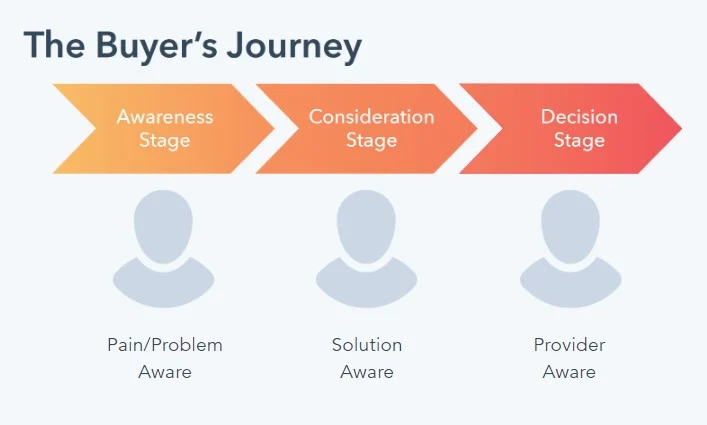Introduction
Marketing evolved from a single-channel into a multichannel activity where companies were using a number of mediums to stay on top of the customer’s mind. As the competition became fiercer, marketers came up with the concept of Omnichannel marketing to stay on top.
Today’s guide is focused on taking an omnichannel approach to run marketing campaigns in the pharma industry for a significant boost in your ROI.
State of Omnichannel Marketing in the Pharma Industry
The pharmaceutical industry is on the slower side of adopting Omnichannel Marketing practices. Eventhough it's benefits have been proven for some time now, we as an industry are only just beginning our adoption.
I’ve already done a detailed post on the general fundamentals of Omnichannel Marketing. For your convenience, here is the list of the main topics I’ve covered in the first post:
- What is the Omnichannel Marketing approach?
- What is the difference between Omnichannel and Multichannel Marketing approaches?
- Benefits of an Omnichannel Marketing approach
- My Proven Omnichannel Marketing Model
- My 2(2) Omnichannel Marketing Model Explained
Feel free to click here if you wish to read that post before diving into this Pharma-specific guide to Omnichannel Marketing.
Difference between Multichannel and Omnichannel marketing
It is necessary to understand the difference between Multichannel and Omnichannel marketing to get a better idea of where we’re headed now. Here’s a simple graphic by Sharon Shtraks that’s worth a thousand words:

Here we can clearly see that while both approaches use multiple channels, key difference between the two is the integration of the channels being used.
I’ve also pointed out other key differences in my previous post that include presence at all possible touchpoints, and the development of customised marketing messages depending on the customer’s stage while leveraging every channel’s unique strengths.
Omnichannel Marketing within the Pharma Industry
While the principles of Omnichannel Marketing are applicable to all kinds of situations, it is important to keep an eye on the specfic dynamics and regulations of the pharma industry while devising your Omnichannel Marketing strategy. Without further ado, let’s jump straight into the practical ways to effectively engage your target audience group i.e. the HCPs.
Key Considerations for Engaging Healthcare Professionals
Focus on the important - Omnichannel marketing, by definition, means capturing and optimising all touchpoints with your target audience. While other points have been getting some attention, I’ve observed that one key touchpoint has somehow escaped the mainstream attention and that’s where the real potential lies. That key touchpoint is the healthcare professionals' interaction with the MSLs of your pharma company.
Customise every message - Marketing efforts targeted at healthcare professionals should not be generic in nature. Customise all your marketing messages according to the target audience and the platforms. For example, a banner ad targeting cardiologists posted on MedScape should not be rehashed to be used as a LinkedIn post targeted at paediatricians.
Personalise every interaction - Don’t start the conversation from scratch every time. The potential customer may feel like they're talking to robots. Instead, record every single interaction and start the next one exactly from the point it had stopped. To do that, the only viable solution is to make good use of software solutions; CRMs.
Leverage the power of technology - Invest in a solution that can record every single interaction with the healthcare professional. The past interaction data should then be used to personalise future interactions like emails, calls, and visits. For example, it’s a waste of resources to send Awareness messages to a doctor who has reached the final Decision phase of the buying journey.

Automate your omnichannel marketing funnel - It is impossible to scale without automating your processes. No matter how small you start, automate every possible process early on. This way, you’ll have free bandwidth to focus on more value-creating processes for your customers.
Focus on analytics - Every bit of data that you get from your marketing activities is worth your attention. Keep a close eye on the analytics. This will tell you what’s working and what’s not. Pivot accordingly. This data should also be readily accessible to the MSLs and guide their future interactions. Other omnichannel funnels can then be developed by tracking and understanding users' interests based on the analytics.
Choose your platforms wisely - The use of different social media channels and platforms by healthcare professionals is increasing significantly. This means that they are more accessible online than ever before. This trend should be taken as an opportunity and your omnichannel marketing campaigns should look to optimise as many of these mediums as possible. It is also important to know which platforms are more popular in your target region. For example, WhatsApp is more common in the Asia-Pacific region but China’s most used messaging app is WeChat. Such differences within a region need to be considered to avoid wastage of marketing resources.
Word of Caution
Being in the healthcare business, I can never overemphasise the importance of strict compliance with relevant regulatory requirements and ethical standards. Even a small oversight can lead to catastrophic results.
Therefore it is hard to go for a global Omnichannel Marketing strategy since you need to consider local regulatory requirements for each particular market. However, there are steps we can take to set up a global solution that can be adapted seamlessly by local markets. I’ll cover this topic in greater detail in a separate post later.





